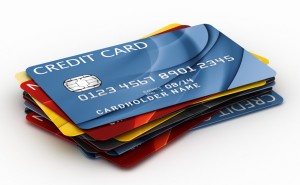 Miles and points are key components of how my husband and I will be able to send ourselves traveling around the world for one year. We’ve been amassing points to help cut down on accommodation costs and miles to cover most of our long-haul flights. This trip has motivated us to learn the ins and outs of credit card, airline, and hotel rewards systems, and friends and family members regularly ask us advice on how to maximize the value they get from their own wallets.
Miles and points are key components of how my husband and I will be able to send ourselves traveling around the world for one year. We’ve been amassing points to help cut down on accommodation costs and miles to cover most of our long-haul flights. This trip has motivated us to learn the ins and outs of credit card, airline, and hotel rewards systems, and friends and family members regularly ask us advice on how to maximize the value they get from their own wallets.
In this (probably) three-part series, I’ll explain the types of credit cards available, the complicated earning and redemption rules, and ways to make the most of the spending you are already doing. Before that, please note that all my commentary on the benefit of credit card miles strictly assumes you are paying off your balances each month; once you start paying any interest, the benefits of credit card rewards quickly erase and swing to the negative side. Ok, with that disclaimer out of the way, let’s get to Part 1 of this series on the types of cards that are out there.
Program-Specific Cards: Credit cards sponsored by a specific airline, hotel, retail store, etc. that can be redeemed for miles and points only related to that program. These cards offer benefits like free breakfast, checked bags, and extra bonuses specific to the sponsor. Usually they have great rewards for the dollars you spend with that program specifically, so they are a good choice for folks that almost exclusively stay at one hotel chain or use one airline (for instance, consultants that have discretion with whom they fly and stay). But they are also highly concentrated, leaving your booking destinies tied to one airline or hotel and your miles and points balance open to devaluations.
Examples include Citi’s American Airlines cards (Citi has a monopoly on American Airlines credit cards whereas Hilton “gets around more” (wink wink) and has cards with American Express and Citi) and Marriott Rewards (exclusively with Chase). I have a few that I took out many years ago (e.g. when I was purchasing my first business suit from J.Crew), but we almost never use these nowadays given the amount of travel we are planning.
General Use Cards: These credit cards can be thought of as general use or flexible rewards earnings. The miles and points you accumulate can generally be applied towards a range of airline or hotel options. Sometimes these cards have special bonuses too. For instance, every quarter, the Chase Freedom® card offers 5 points per $1 on rotating categories (last quarter it was grocery stories—this quarter it is restaurants). Or, our favorite, the Chase Sapphire Preferred® card that has 3x points for dining on the 1st Friday of the month (and, yes, if you were wondering, we often make our dinner plans accordingly).
This is the primary category that our family uses since we place a high value on bankable miles that can be applied towards a range of airline and hotel options, depending on whichever has the best value for our current need.
Points-to-Dollars Cards: These cards primarily focus on cash back rewards. These rewards can be in the form of statement credits or “purchase erasers,” gift cards, or simply cash. These cards are great for people who do not travel very much and want to earn discounts on their credit card purchases. However, as we’ll see later, for folks that travel, especially internationally, the value you derive from cash back rewards is usually lower than travel-related rewards. Capital One and Barclays make good examples of these types of cards. I have one or two of them, but they are definitely collecting dust right now (since our focus has shifted to international travel).
These are the three categories that I’d generally group the available cards out there into. Part 2 of this series will attempt the formidable task of trying to explain the complicated earning and redemption rules of the credit card world…. rules that, as readers of Redhead Roamer, you will soon master!
Leave a Reply